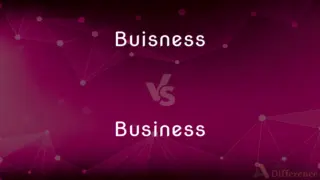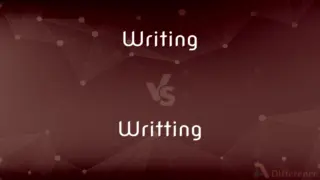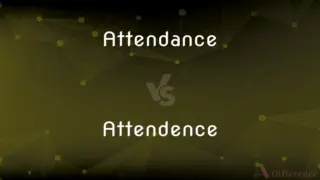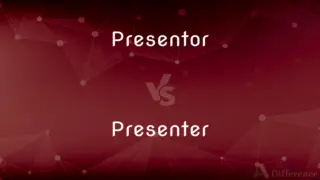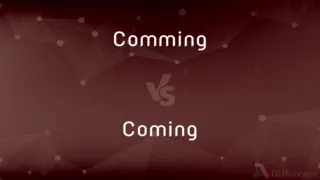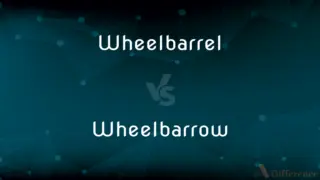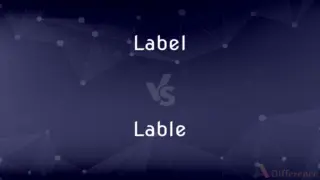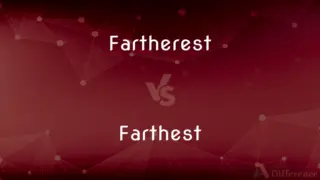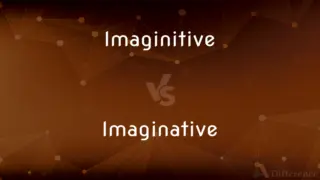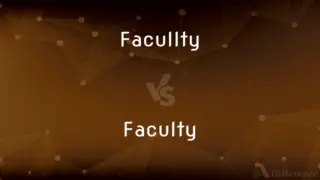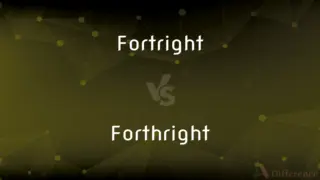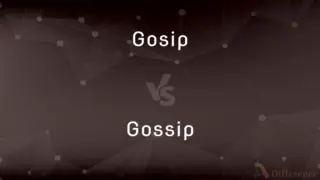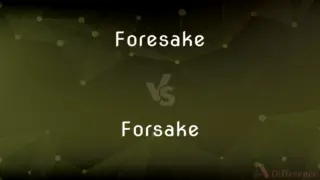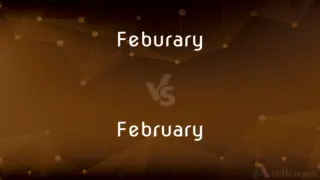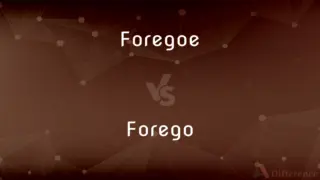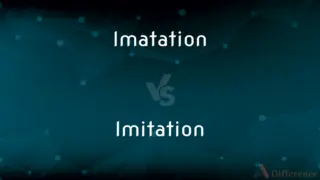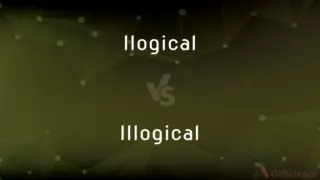Simetrical vs. Symmetrical — Which is Correct Spelling?
By Tayyaba Rehman — Updated on March 29, 2024
"Simetrical" is an incorrect spelling. The correct spelling is "Symmetrical," meaning having balanced proportions or mirroring halves.

Table of Contents
Which is correct: Simetrical or Symmetrical
How to spell Symmetrical?

Simetrical
Incorrect Spelling

Symmetrical
Correct Spelling
ADVERTISEMENT
Key Differences
Use mnemonic: "Same Y-axis makes it symmetrical."
Think of "symmetry" and note its spelling; "symmetrical" is its adjective form.
Visualize the word "metric" within "Symmetrical" to remember its connection to measurements and balance.
Remember the prefix "sym-" which means together or alike, like in "symbiosis" or "symphony."
Remember that "i" is not symmetric, while "y" can be split down the middle, just like symmetrical objects.
ADVERTISEMENT
How Do You Spell Symmetrical Correctly?
Incorrect: Her drawing was nearly simetrical, but one side was slightly off.
Correct: Her drawing was nearly symmetrical, but one side was slightly off.
Incorrect: The face is not completely simetrical; one eye is higher than the other.
Correct: The face is not completely symmetrical; one eye is higher than the other.
Incorrect: The simetrical design of the building was visually appealing.
Correct: The symmetrical design of the building was visually appealing.
Incorrect: Artists often strive for simetrical balance in their compositions.
Correct: Artists often strive for symmetrical balance in their compositions.
Incorrect: Simetrical patterns are often found in nature.
Correct: Symmetrical patterns are often found in nature.
Symmetrical Definitions
Having two identical sides that mirror each other.
The butterfly's wings were perfectly symmetrical.
Exhibiting balance and harmony in design or structure.
The building's symmetrical architecture was pleasing to the eye.
Having components that correspond in size and shape.
The leaves on the tree were surprisingly symmetrical.
Characterized by or exhibiting symmetry in a mathematical or logical relation.
The equation displayed a symmetrical pattern.
Relating to or involving symmetry in multiple aspects or fields.
The artist used symmetrical patterns in both her paintings and sculptures.
Of or exhibiting symmetry.
Exhibiting symmetry; having harmonious or proportionate arrangement of parts; having corresponding parts or relations.
Involving or exhibiting symmetry; proportional in parts; having its parts in due proportion as to dimensions; as, a symmetrical body or building.
Having the organs or parts of one side corresponding with those of the other; having the parts in two or more series of organs the same in number; exhibiting a symmetry.
Having an equal number of parts in the successive circles of floral organs; - said of flowers.
Having a common measure; commensurable.
Having similarity in size, shape, and relative position of corresponding parts
Exhibiting equivalence or correspondence among constituents of an entity or between different entities
Symmetrical Meaning in a Sentence
He noticed that the vase had a perfectly symmetrical shape.
The human body is largely symmetrical, with two eyes, ears, arms, and legs.
Symmetrical patterns in art can be both calming and aesthetically pleasing.
The butterfly's wings are an excellent example of symmetrical beauty.
Architects often use symmetrical designs to create harmony in buildings.
Children are fascinated by the symmetrical shapes they can create with a kaleidoscope.
The symmetrical arrangement of the garden made it a tranquil space.
Symmetrical designs are often found in traditional quilts.
The bridge's symmetrical arches were a marvel of engineering.
The snowflake is a natural example of symmetrical complexity.
The symmetrical reflection of the mountain in the lake was breathtaking.
The symmetrical layout of the city streets made navigation easy.
He preferred symmetrical designs because they conveyed a sense of order.
A symmetrical face is often considered a sign of beauty in many cultures.
Symmetrical balance in a painting can convey a sense of stability.
Fashion designers sometimes play with symmetrical and asymmetrical lines for visual interest.
Symmetrical exercises can help ensure even muscle development on both sides of the body.
She admired the symmetrical patterns on the ancient pottery.
The company's logo is symmetrical, giving it a balanced look.
A symmetrical composition can make an image easier to understand.
The twin towers were designed to be exactly symmetrical, standing side by side.
The symmetrical distribution of windows on the building facade was pleasing to the eye.
Symmetrical hairstyles can give a very neat and tidy appearance.
The interior designer suggested a symmetrical furniture arrangement for the living room.
Symmetrical geometric shapes are often used in math problems to teach concepts of equality and balance.
Common Curiosities
What is the verb form of Symmetrical?
The verb form related to "symmetrical" is "symmetrize."
What is the root word of Symmetrical?
The root word is "symmetry."
Which vowel is used before Symmetrical?
Typically, the article "a" is used before "symmetrical."
Why is it called Symmetrical?
It's called "symmetrical" because it refers to something having two sides that are alike in size, shape, and arrangement.
Which conjunction is used with Symmetrical?
Any conjunction can be used with "symmetrical" depending on the context of the sentence.
Which preposition is used with Symmetrical?
Common prepositions used with "symmetrical" include "to" and "with." For instance, "symmetrical to" or "symmetrical with."
What is the plural form of Symmetrical?
Adjectives like "symmetrical" don't have plural forms.
What is the singular form of Symmetrical?
"Symmetrical" itself is an adjective and does not have a singular or plural form in the traditional sense.
What is the pronunciation of Symmetrical?
The pronunciation is /sɪˈmɛtrɪkəl/.
Is Symmetrical an adverb?
No, "symmetrical" is not an adverb.
Is Symmetrical a negative or positive word?
It's neutral but can have a positive connotation in contexts where balance and harmony are valued.
Is the Symmetrical term a metaphor?
No, "symmetrical" is a descriptive term, not a metaphor.
Is Symmetrical a countable noun?
"Symmetrical" is not a noun, so it's not countable.
Which article is used with Symmetrical?
Typically, the article "a" is used before "symmetrical."
Is Symmetrical a collective noun?
No, "symmetrical" is not a collective noun.
Is the word Symmetrical is Gerund?
No, "symmetrical" is not a gerund.
How many syllables are in Symmetrical?
There are four syllables in "symmetrical."
How do we divide Symmetrical into syllables?
Sym-met-ri-cal.
What is a stressed syllable in Symmetrical?
The second syllable, "met," is stressed.
Is Symmetrical an abstract noun?
No, "symmetrical" is not an abstract noun.
Is the word Symmetrical is imperative?
No, "symmetrical" is not an imperative verb form.
What is another term for Symmetrical?
Another term for "symmetrical" is "proportional."
What is the opposite of Symmetrical?
The opposite is "asymmetrical."
Which determiner is used with Symmetrical?
Determiners like "a," "an," or "the" can be used depending on the context.
Is Symmetrical a noun or adjective?
"Symmetrical" is an adjective.
Is Symmetrical a vowel or consonant?
"Symmetrical" is a word that contains both vowels and consonants.
Is the word “Symmetrical” a Direct object or an Indirect object?
"Symmetrical" is an adjective and does not function as a direct or indirect object.
What part of speech is Symmetrical?
"Symmetrical" is an adjective.
How is Symmetrical used in a sentence?
The pattern was perfectly symmetrical, creating a sense of balance in the design.
Share Your Discovery

Previous Comparison
Progess vs. Progress
Next Comparison
Grately vs. GreatlyAuthor Spotlight
Written by
Tayyaba RehmanTayyaba Rehman is a distinguished writer, currently serving as a primary contributor to askdifference.com. As a researcher in semantics and etymology, Tayyaba's passion for the complexity of languages and their distinctions has found a perfect home on the platform. Tayyaba delves into the intricacies of language, distinguishing between commonly confused words and phrases, thereby providing clarity for readers worldwide.













